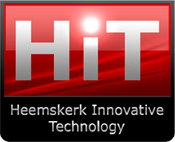Extending Virtual Reality Simulation of ITER Maintenance Operations with dynamic effects
Abstract:
Virtual Reality (VR) simulation can be used to study, improve and verify ITER maintenance operations during preparation. VR can also improve the situational awareness of human operators during actual Remote Handling (RH) operations. Until now, VR systems use geometric models of the environment and the objects being handled and kinematic models of the manipulation systems.
The addition of dynamic effects into the VR simulation was investigated. Important dynamic effects are forces due to contact transitions and the bending of beams under heavy loads. A novel dynamics simulation module was developed and introduced as an add-on to the VR4Robots VR software. Tests were performed under simplified test conditions and in the context of realistic ITER maintenance tasks on a benchmark product and on the ECRH Upper Port Launcher Plug (UPL).
The introduction of dynamic effects into VR simulations was found to add realism and provide new insights in procedure development. The quality of the haptic feedback depends strongly on the haptic device used to “display” haptic feedback to the operator. Dynamic effect simulation can also form the basis for real-time guidance support to operators during the execution of maintenance tasks (augmented reality).
